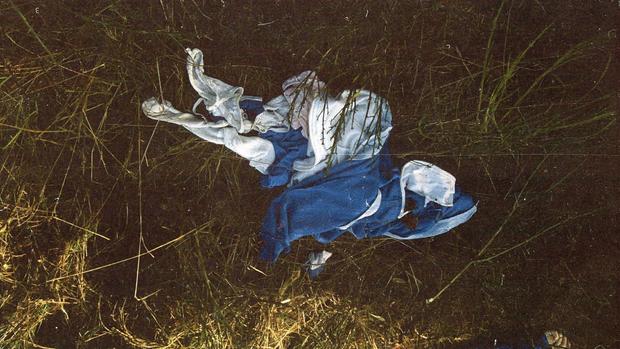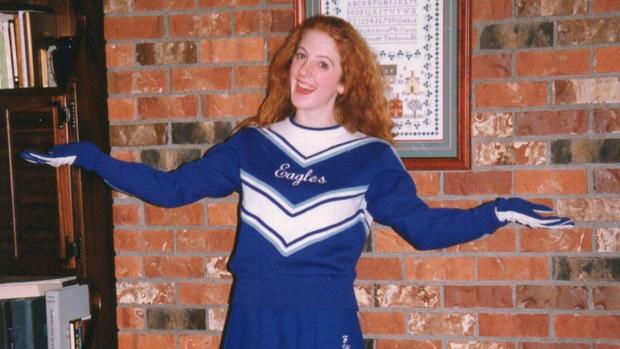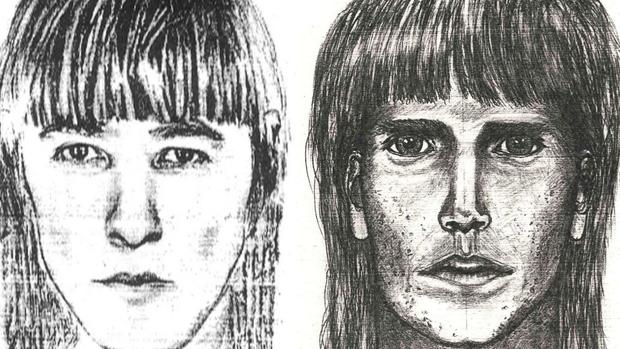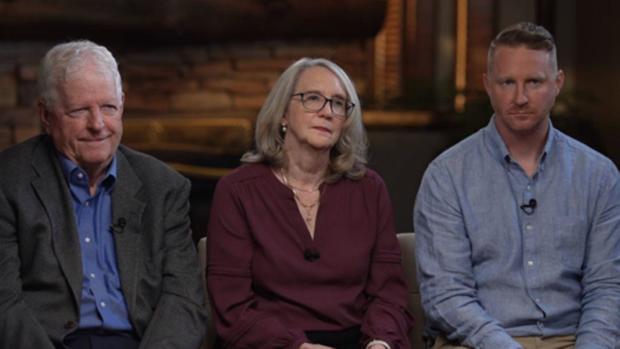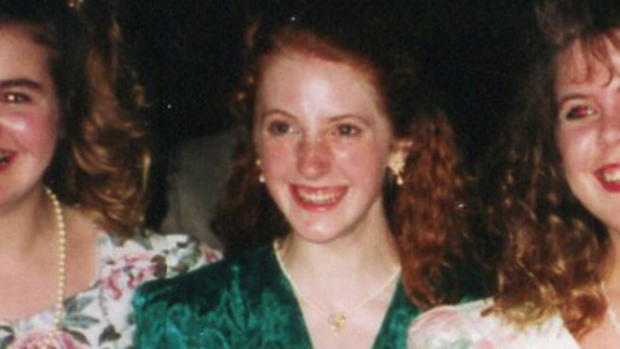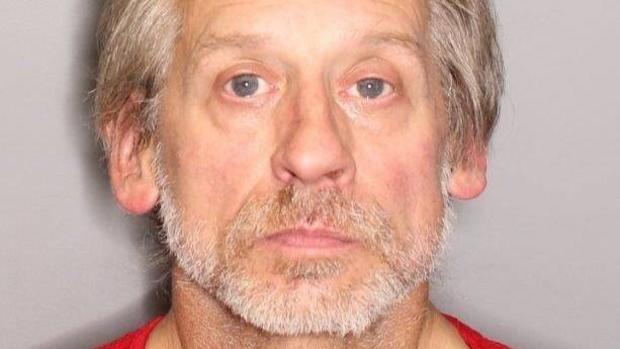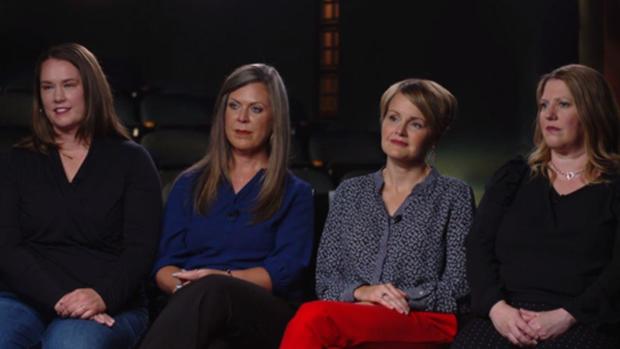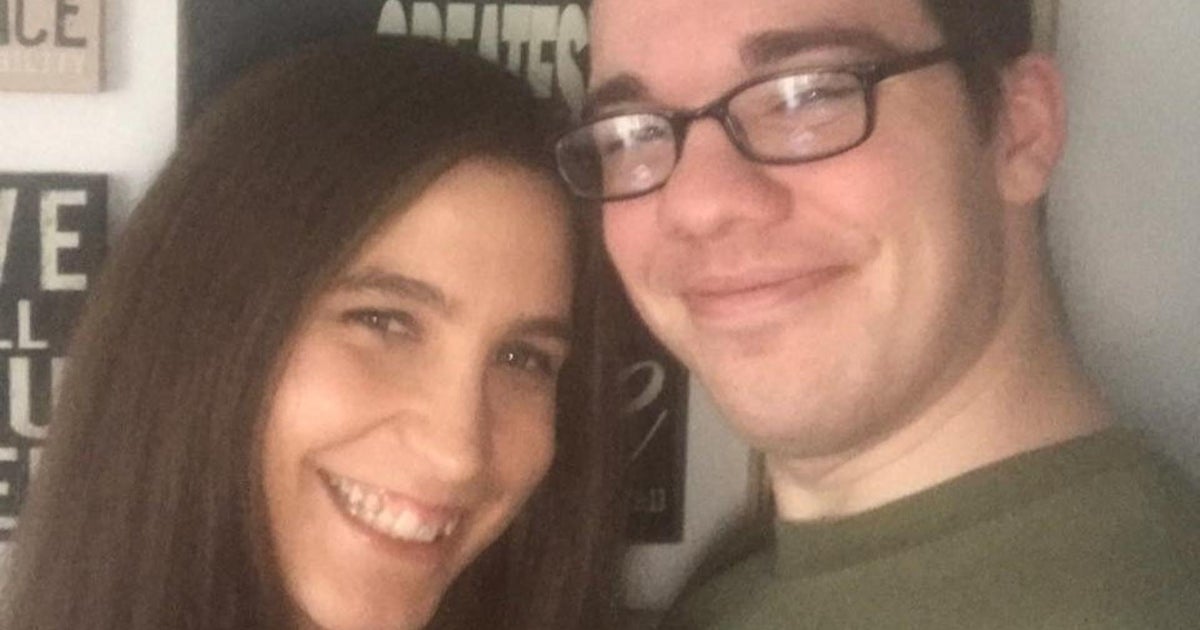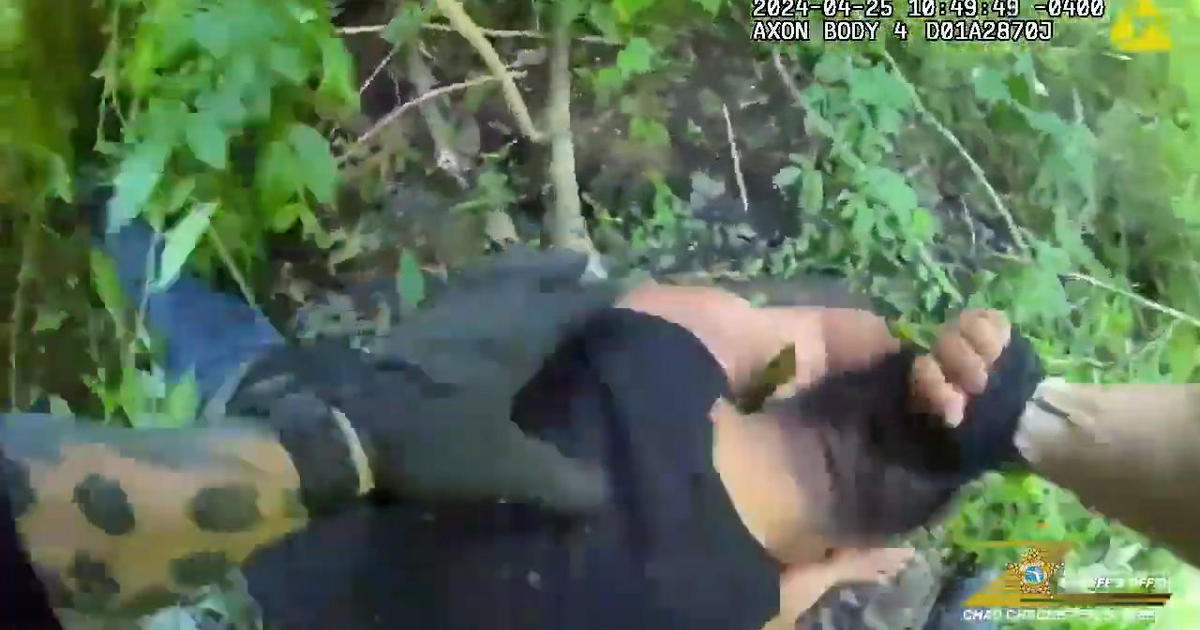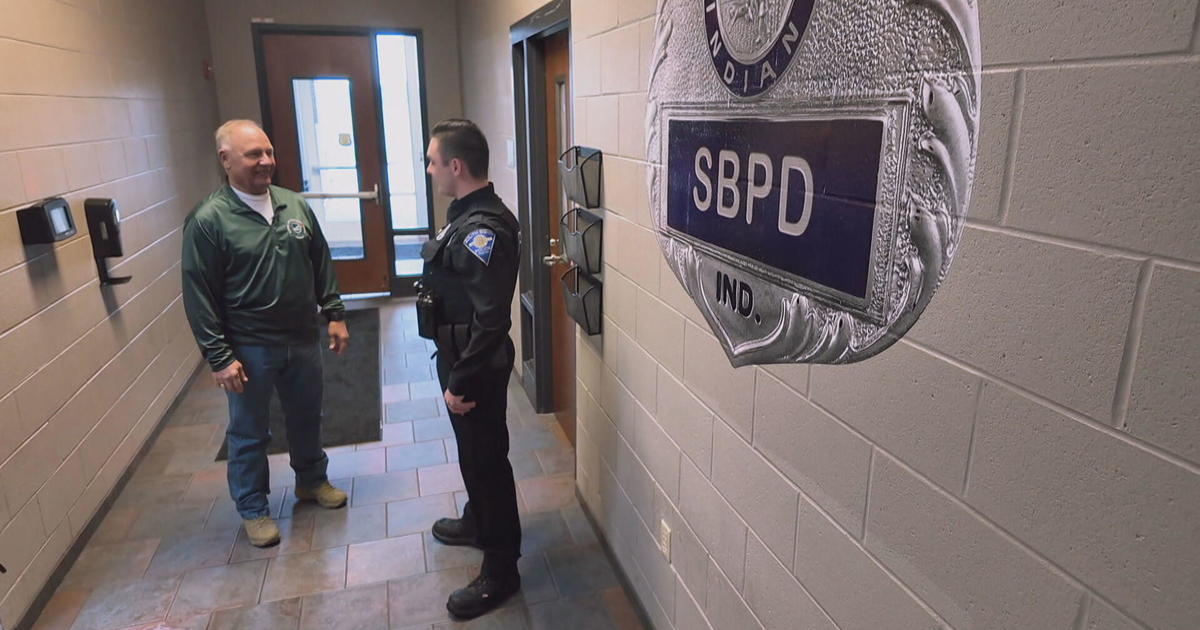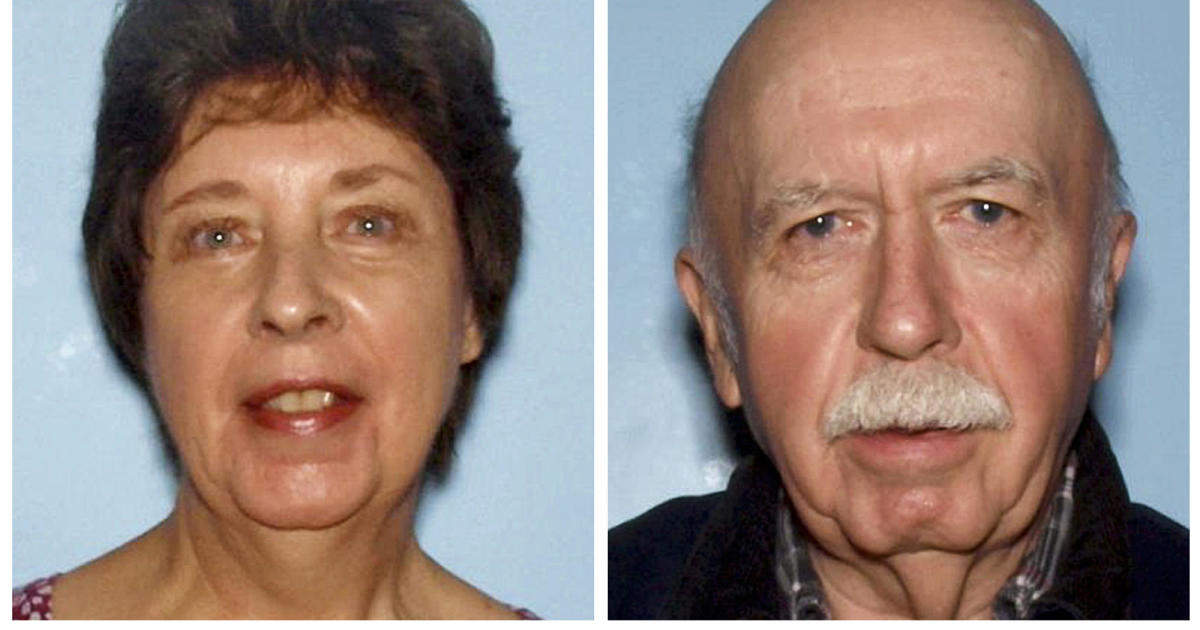3 decades after teen's murder, DNA helps ID killer with a history of crimes against women
Sarah Yarborough was a 16-year-old honors student on her way to drill team practice, when she was found murdered on the campus of her high school. Investigators had DNA evidence and eyewitnesses, but it would take almost three decades to identify Sarah's killer. As "48 Hours" contributor Natalie Morales reports, this case had a big impact on her family, friends and generations of investigators.
A HORRIFIC DISCOVERY
Natalie Morales: How often do you think about Dec. 14th, 1991, and what happened on that day?
Drew Miller: Quite a bit. It's a very traumatic thing to go through.
It's been over 30 years, but the details of that day have never faded for Drew Miller.
Drew Miller: I had my friend spend the night at my house. We woke up that morning … watched cartoons, ate cereal, left to go skateboarding.
Miller, who was just 13 at the time, lived down the street from Federal Way High School near Seattle, Washington.
Natalie Morales: The school grounds have changed quite a bit, right?
Drew Miller: Drastically, yes … The tennis court is the only thing that's still here.
Miller often took shortcuts through the school to go skateboarding, as he and his friend did that day.
Drew Miller (outside Federal Way High School): We used to hop the fence, right here ... and cut through here (pointing ) ... It was freezing cold that day. There was ice in all of the mud puddles. We just, you know, started smashing them because it's fun ... sounds like breaking glass.
That's when Miller says they noticed a man in the bushes.
Drew Miller: Right where you see the edge of this dugout right here (points) … That was all bushes that were probably this tall (positioning his hand near his shoulders). So, we couldn't see him until he stood up.
Drew Miller: He's just staring at us from the bushes. That was pretty jarring. But then he just walked out of the bushes. So, then we just assumed he was just smoking weed or something.
The mysterious man kept to himself and walked ahead of the boys. Miller says they didn't think much of it until they came across a horrendous scene. There in the bushes, where the man had just been, was the body of a young woman.
Drew Miller: It was horrible. Absolutely horrible. The way that he left her body. … She clearly fought for her life.
Miller says his shock turned to fear when he realized the man, who was still just feet in front of them, was now staring directly back at him.
Natalie Morales: Does that look still haunt you?
Drew Miller: Oh yeah. Yeah … It's frozen in my mind.
Natalie Morales: The boogeyman then.
Drew Miller: Legitimate boogeyman.
The boys raced to Miller's house and police were called to the scene.
Scott Strathy: When we approached the victim … on one of the pieces of clothing we saw the name "Sarah."
Detective Scott Strathy with the King County Sheriff's Office was one of the first officers on the scene.
Scott Strathy: And of course, later we found out that that was Sarah Yarborough.
Scott Strathy: Even for experienced investigators, this scene was really hard to deal with. Just the innocent nature of this young woman. In her school drill team uniform. With her hot curlers still in her hair. … This was just pure unadulterated evil.
Investigators believed this was a sexually motivated murder.
Scott Strathy: She was partially clothed, her jacket, her undergarments, her bra had been removed … and placed next to her body.
Police discovered that the car Sarah had driven that morning was parked in the school parking lot – about 300 feet from where her body was found.
Det. John Free: There didn't really appear to be any sort of a struggle in the car itself.
Detective John Free with the King County Sheriff's Office Major Crimes Unit would later join the investigation.
Det. John Free: She had a container of orange juice that she had made that morning. It was just sitting in the front seat. Nothing was tipped over. So the question was, how did she get from her car to this hill? What lead her there?
Scott Strathy: Sarah was one of these people that would help anyone with anything at any time. And part of our working theory was, was she coaxed into following, you know, the suspect. Did he say something like – I'm looking for my lost dog or I can't find my car keys? Perhaps Sarah, in an attempt to assist this person, may have followed him to that area.
Natalie Morales: (pointing to photo of Sarah in her drill team uniform): Tell me about this one.
Laura Yarborough: That was less than a week, I think, before she died. I said, "could I take your photo because your Great Grandma really wants a picture of you in your drill team." And she said, "OK."
Laura Yarborough: It was just too incredible to believe that it could even happen.
Laura Yarborough: I mean who thinks that your daughter's gonna be murdered?
Sarah's parents, Tom and Laura Yarborough, had the excruciating task of having to tell their two sons the tragic news. Sarah's youngest brother Andrew was just 11 years old at the time.
Andrew Yarborough: At that age, probably never seen or heard your parents cry much. But that pain in the voice, is very, very vivid.
Sarah, who had just started her junior year in high school, had big plans for her future — starting with college.
Laura Yarborough: She didn't want to go to a state school. She wanted to go to a school far away (laughs). She loved to travel.
Liberty Barnes: I actually would hear her say … "I can't decide if I wanna be a museum curator or an engineer like my father." … And I was always rooting for the museum curator (laughs).
Liberty Barnes, Kristi Gutierrez, Amy Parodi and Mary Beth Thome were some of Sarah's closest friends.
Mary Beth Thome (pointing at the group photo seen above): So, this was after the last day of tenth grade. When we were just kinda goofing around afterwards. And that totally, I mean you can see, there's Sarah right in the middle of it. Just being goofy.
Natalie Morales: The fiery red hair, was that her personality a little bit?
"Yes," Sarah's friends replied in unison.
Amy Parodi: She was artistic, she was creative, she was smart. She was feisty ...
Liberty Barnes: Imaginative.
Amy Parodi: All of those things.
Kristi Gutierrez: She would be the last one to wait for someone. … Always be there with a smile. She would help with homework. … It was her ultimate kindness.
After Sarah was ripped from their lives, they say their sense of safety was gone forever.
Amy Parodi: You grow up getting all the safety conversations with your parents and bad things can happen and its sort of a vague possibility out there. And then all of a sudden, it was like no, no, no, no it can really happen. It really did just happen.
Scott Strathy: It was all hands on deck. The Sheriff's Office put everything they had into solving this case as soon as they could.
And the killer left behind important evidence. Sarah had not been raped, but the killer's DNA was found on pieces of her clothing.
Det. John Free: There was semen found on her underwear and on her jacket. … We had a full male DNA profile.
DNA technology was new back in 1991, but investigators hoped that DNA would someday lead them to Sarah's killer. In the meantime, they had eyewitnesses.
Drew Miller: I thought for sure somebody would know him.
Miller and his friend who was with him the morning they found Sarah's body, worked with police and a sketch of the man they saw in the bushes was released to the public. Police would later release a more elaborate sketch.
Kristi Guiterrez: I very vividly remember going through yearbooks. Going, "OK, who looks like the sketch?" Everyone ... it felt like at one point was, was a suspect.
But as days went by and as leads dried up, police kept coming back to Drew and his friend.
Drew Miller: They just made me feel like I was the only person that could help them solve this. … I know that wasn't their intent. I know the officers were just doing their best.
Natalie Morales: How much pressure were you feeling?
Drew Miller: It's unimaginable pressure.
And despite everyone's best efforts, it would take years to find Sarah's killer.
Scott Strathy: This case was never forgotten.
IN SEARCH OF A DNA MATCH
In early June of 1993, a year-and-a-half after Sarah Yarborough's murder, local media were there as students gathered in the courtyard of Federal Way High School to honor her.
KOMO/ABC NEWS REPORT: Bill Fuller, a family friend who helped spearhead the move for a memorial to remember Sarah unveiled it with help from Sarah's younger brother Andrew.
Bill Fuller: It was quite a day. … A lot of tears as they looked at it. You could see Sarah in that bench.
Bill Fuller has known the Yarboroughs for years, and his daughter was in Sarah's class.
Bill Fuller: Sarah … she was fun to be around … probably what we missed the most is she was fun to be around.
The bench reads "Carpe Diem" — "Seize the day" — a mantra Sarah lived by. Encased in bronze are some of her favorite possessions — ballet shoes, a replica of Sarah's beloved dog "Gibby" and books.
KIRO-TV NEWS REPORT (1993): Andrew Yarborough: It's nice that people cared about her so much.
Andrew Yarborough, now an adult, admits that he struggled as a young teenager. It was especially difficult to see those sketches around town of the man police believed murdered his sister.
Andrew Yarborough: There was drawings of the person's face all over in businesses and towns. I do recall that quite a bit, having that kind of a constant reminder.
Tom Yarborough: Looking back, I feel like we didn't do a very good job with the boys. … But we were just so consumed by our own grief that we didn't take time to help them.
Laura Yarborough: I think we didn't really know how to help them. It wasn't something we had experience with. We didn't know anything about grieving ourselves or how to help them through it.
And they weren't alone in their grief. Shannon Grant, the last friend to see Sarah alive, says she lived with constant regret.
Shannon Grant: I wish we could go back and do it all over again. That I would have asked the other drill team members what time practice was. You know, maybe dropped her off. I mean there are a lot of the what ifs.
The milestones were especially painful.
Liberty Barnes: There was survivor guilt. Like why am I filling out my college applications when Sarah wanted to go to college? This isn't fair.
Mary Beth Thome: Every joyful occasion had this sorrow that went with it. There's one missing from the crowd here.
Graduation day, June 12, 1993, was an emotional day but even more so since it fell on what would have been Sarah's 18th birthday. Laura Yarborough came to support her daughter's friends.
Liberty Barnes: I do not know where she found the strength to do that.
Laura Yarborough says Sarah's friends helped ease her grief somewhat and she thinks she filled a void for them, as well.
Laura Yarborough: Sometimes they would say, "Well, I'm gonna date this person and I just wanted to let you know cause I wasn't sure if Sarah would approve of this person" (laughs).
Natalie Morales: So, they would seek approval through you. You became sort of their surrogate.
Laura Yarborough: Yes (laughs).
As life slowly moved forward, investigators kept working the case.
Det. John Free: I describe it as a relay race where the baton was handed off from one detective to the next over the years and decades. … I kind of refer to myself as the fifth Beatle in this investigation.
By the early 2000s, investigators had received over 3,000 leads. And advances in technology made them hopeful. They entered the DNA from the crime scene into the recently established CODIS system – a national DNA database that includes profiles of convicted offenders.
Det. John Free: The strategy was to continually try to see if there would ever be a match … while also investigating leads.
But over time there appeared to be no match.
Det. John Free: For us to have DNA evidence from the suspect, but not have that link to anybody, it just didn't make sense. It seemed hard to believe the suspect had not committed any other prior crimes where his DNA wouldn't be in the system.
That's when he says detectives realized they had to go in a different direction.
Colleen Fitzpatrick: My name's Colleen Fitzpatrick and I'm one of the pioneers of forensic genetic genealogy.
In 2011, investigators reached out to Fitzpatrick to inquire about using forensic genetic genealogy — the practice of using software to compare unknown DNA profiles to information from public DNA databases and searching family trees to identify suspects. Genetic genealogy is well known now and has been used to solve numerous cold cases, but at that time, it was in its infancy.
Colleen Fitzpatrick: When I started in this field, it didn't exist.
Fitzpatrick says most police agencies had been skeptical of this new investigative tool.
Colleen Fitzpatrick: The police, you know, thought I was crazy, this little old lady with a crazy idea. I was actually almost laughed out of the room …
But the King County Sheriff's Office took a chance on Fitzpatrick.
Colleen Fitzpatrick: It was for free. I just wanted to see if it worked. What are you gonna lose if you try something?
The Yarboroughs were encouraged.
Tom Yarborough: I think it wasn't until we met Colleen Fitzpatrick that I really began to think, OK, they're gonna find this person.
And it didn't take long before Fitzpatrick came up with a name of a possible suspect that surprised just about everyone.
Mary Beth Thome | Sarah's friend: Everyone went "Pff. No way."
TECHNOLOGY CATCHES UP WITH THE INVESTIGATION
Colleen Fitzpatrick: From the beginning it was very promising. And the story took some really bizarre twists.
In 2011, 20 years after Sarah's murder, when forensic genetic genealogist Colleen Fitzpatrick started working the Yarborough case, she traced Sarah's killer's family tree back to a man named Robert Fuller, whose family had come to America on the Mayflower.
Colleen Fitzpatrick: I found numerous matches to the name "Fuller."
When Fitzpatrick gave the name "Fuller" to the King County Sheriff's Office, they immediately knew of one person with that last name. Bill Fuller — the Yarborough's close family friend who helped get that memorial bench built for Sarah.
Det. John Free: Naturally, that piqued our interest.
From the beginning, Sarah's family and friends believed Bill Fuller had nothing to do with Sarah's murder.
Laura Yarborough: He didn't look at all like the suspect. The wrong hair color. He's short, he's not tall. He just didn't fit the profile at all.
Fuller's age didn't match the profile either. He's 79 years old now but was 48 years old at the time of Sarah's murder — at least two decades older than the man Drew Miller described.
Bill Fuller: There was no way that I could be even remotely connected to this case.
He fully cooperated with police and voluntarily gave them a DNA sample. It didn't match the DNA found at Sarah's crime scene, yet Fitzpatrick remained optimistic.
Colleen Fitzpatrick: The good news is that we came up with a possible last name to investigate and this was the first break in the case in 20 years.
Fitzpatrick knew that Sarah's killer was in the Fuller family tree somewhere, so she and her team went back to work. And as the years went by she knew she was only getting closer — especially after 2018 when forensic genetic genealogy was used to identify the Golden State Killer.
Colleen Fitzpatrick: The Golden State Killer really started the big revolution.
Colleen Fitzpatrick: … things had evolved that we had the data to work with. The technology was in place that we could go for it.
Then, in September 2019, Fitzpatrick's team made a breakthrough. They came up with two new possible suspects: brothers Edward and Patrick Nicholas, who, as the DNA showed, were distant cousins of Bill Fuller.
Colleen Fitzpatrick: This is eight years of on-and-off and looking at it and never giving up. … This is it. This is exciting.
Det. John Free: Edward Nicholas … was a registered sex offender. His DNA was in the system. Was in CODIS.
But Edward's DNA wasn't a match. So they zeroed in on his brother Patrick who, in 2019, was a divorced loner who lived a couple of towns away from Federal Way.
Det. John Free: We learned that he was working at an auto part store. … Lived alone. No children, no friends or acquaintances that would even visit him. … Everything that he did was mostly by bus. … He wasn't driving.
Detective Free says he discovered that when Sarah was murdered, the bus route Patrick Nicholas often took happened to go past Federal Way High School. Back then, Nicholas was just 27 years old and around that time looked very much like the description of the sketch.
Det. John Free: It looked promising at that point, but we still needed to get a DNA sample from him to match up to the DNA evidence that we had.
So, in late September 2019, investigators came up with a plan.
Det. John Free: We assigned a team of undercover detectives to start doing surveillance on Patrick Nicholas. In the hopes of obtaining a surreptitious DNA sample.
Eventually, undercover detectives followed Nicholas to a laundromat.
Det. John Free: They saw him go outside and smoke a cigarette. … And Patrick Nicholas was seen throwing the cigarette butt on the ground that was collected by our detectives.
Natalie Morales: That's what you needed.
Det. John Free: Yes.
Natalie Morales: Right there, that cigarette butt.
Det. John Free: Yes. Actually he dropped two cigarette butts and a napkin that fell out of his pocket and all three items were collected.
The DNA samples were rushed to the crime lab and within days detectives received the call they had been waiting for.
Det. John Free: The DNA matched. This was our suspect.
Natalie Morales: Perfect match?
Det. John Free: Yes.
Patrick Nicholas was arrested.
Natalie Morales: There were so many suspects over the years, was Patrick Leon Nicholas ever named a suspect?
Det. John Free: Out of 4,000 tips. He was never named.
Andrew Yarborough: I was, I was pretty in shock.
The news was a relief for Sarah's family and friends who had never given up hope that they would get answers.
Laura Yarborough: One thing the detectives kept telling us was … eventually technology's gonna solve this case. … I trusted that, and they turned out that they were right.
Kristi Gutierrez : And I remember going out to my car … and bawling, just bawling. … Finally. Finally they got him.
When Drew Miller — who had seen Sarah's killer back in 1991 — saw Patrick Nicholas's face, he says he knew they had the right person.
Natalie Morales: What did he look like?
Drew Miller: The same guy, just older.
Natalie Morales: Same face?
Drew Miller: Evil eyes. Those evil eyes stayed the same.
Natalie Morales: All these years later?
Drew Miller: Yeah.
But it was not over yet.
DETECTIVE (interrogation): Why do you think you're here?
PATRICK NICHOLAS: I have no clue.
During his interrogation …
PATRICK NICHOLAS: What am I am being charged for?
… when detectives specifically asked him about Sarah's murder, he gave an alarming response.
DETECTIVE: What we're investigating is the death of a young girl. Her name is Sarah Yarborough.
PATRICK NICHOLAS: What year?
Det. John Free: Interestingly he asked what year this was, and that really sent up a flag.
Natalie Morales: Why?
Det. John Free: Why would you ask that? He's being told this is a murder case. We're wondering at this point, are there other victims?
PATRICK NICHOLAS (interrogation): This is it. I'm not gonna say anything …
After an hour and a half, Nicholas asked for an attorney and stopped talking. But his criminal record would speak volumes.
Anne Croney: I am the one that got away.
A CRIMINAL PATTERN OF BEHAVIOR
On a quiet morning in June 1983, eight years before Sarah's murder, 21-year-old Anne Croney was sitting by her car along the Columbia River in Richland, Washington, when a man approached her.
Anne Croney: He seemed normal. … kind of friendly, actually, just friendly … I had asked him if he'd done any water skiing yet because he said he had just moved to town and he said he couldn't swim. … And he said, "my name is Pat Nicholas."
After a few minutes of small talk, she became uncomfortable.
Anne Croney: I noticed his voice was getting shaky and I told him I had to go. … I went to close the door and he put a knife to my throat. … Everything kind of stopped at that moment. … He told me to take my clothes off.
Nicholas stuffed Croney's underwear into her mouth to prevent her from screaming, forced her out of the car, and led her to the riverbank.
Anne Croney: We got about halfway down the bank, and he told me to stop … I ran … and dove in the river because I was thinking he couldn't swim … swam as hard as I could.
Natalie Morales: Swam for your life.
Anne Croney: I swam for my life.
Passersby found Croney at a dock nearby and called police. As it turns out, 19-year-old Patrick Nicholas was no stranger to law enforcement and had a record. He had raped two women and attempted to rape a third.
Anne Croney: He'd been convicted … of rape as a juvenile and had actually only just been out for a few months when he attacked me.
Days after Croney's attack, he was tracked down, arrested, and pleaded guilty to attempted rape. He told authorities, "I realize that I have a problem concerning raping girls." At his sentencing hearing, Croney spoke out.
Anne Croney: I was actually very angry and asked the judge for the maximum sentence and the judge did agree and sentenced him to 10 years. … So, I thought it was over. I thought that justice had been served.
But Patrick Nicholas did not serve the full 10 years in prison. He was released after just three-and-a-half years. Croney was never notified. She barely thought of him again until October 2019.
Anne Croney: The police knocked on my door … and said that there were detectives in Seattle that wanted to talk to me about a cold case.
They informed Croney that Patrick Nicholas had been arrested again — this time for the murder of Sarah Yarborough.
Anne Croney: They told me that there were similarities in the cases, and I was crushed. … It had never occurred to me that what I escaped from was a murderer.
What's more, if Nicholas had served his full prison sentence he would have still been behind bars that December morning in 1991 — unable to murder Sarah Yarborough.
Natalie Morales: How angry are you to hear that he was released that early?
Anne Croney: Very. It brought up a lot of the old anger and even more anger because the system failed.
King County deputy prosecuting attorneys Celia Lee and Mary Barbosa describe him as a serial predator with a clear pattern.
Celia Lee: All of the women were approached at or near their car. … he would strike up conversation and then pull a knife and tell them that they needed to walk … where he would order them to take off their clothes and then rape them.
Nicholas had also been convicted of sexually assaulting a minor in 1994, three years after Sarah's murder. Five sexual assaults that investigators knew of – none of which had required him to submit his DNA so there was no record of him in the CODIS database. But in pre-trial hearings, the judge ruled that Nicholas' criminal history could not be entered in as evidence.
Celia Lee: She found that it would be unfairly prejudicial to the defendant.
But the prosecutors were hopeful their case was strong enough. In early 2023, more than 30 years after Sarah Yarborough's murder, her accused killer – now 59 years old – went on trial. Sarah's childhood friends were there.
Kristi Gutierrez: I so clearly remember … the morning before the trial started just going, "I don't know if I can do this." Like, you know I had so many different emotions flowing through, and it was like, "no, we need to be there."
Liberty Barnes: There was this absolute love for Sarah and the Yarboroughs that was so strong.
Natalie Morales: Did you feel like they were a lifeline for you?
Laura Yarborough: Yeah … You weren't in it alone. You were all in it together.
As the trial got underway, the focus was on the DNA.
Natalie Morales: What was your strategy then, in trying this case.
Mary Barbosa: Well, we needed them to trust the science.
CELIA LEE (in court): There was a field that was emerging called forensic genetic genealogy.
Patrick Nicholas's public defender, David Montes, challenged how forensic genetic genealogy was used to first identify Nicholas — the first time that kind of defense had been used in Washington State.
DAVID MONTES (in court): I want to dig into the science …
DAVID MONTES (in court): They used technology that was not only unproven, but just wacky really …
DAVID MONTES (in court): He's not the person that killed Sarah Yarborough. … the police … needed an answer more than they needed the right answer … And, so, they turned to new novel, untested technology.
David Montes: Genetic genealogy is a new field … it really hasn't been tested out … should we be making important decisions based on something that is not well or deeply understood?
But the prosecutors said that argument was moot because Patrick Nicholas' DNA matched the DNA found at the Yarborough crime scene. And Detective Free says the numbers were astronomical.
Det. John Free: The odds were 1-in-120 quadrillion –
Natalie Morales: Quadrillion –
Det. John Free: Right. That it was somebody else.
If the numbers pointed to Nicholas' guilt, law enforcement says so did evidence found at his house near the time of his arrest in 2019.
Det. John Free: it was almost like a lair … there was no working electricity at this house … stacks of pornography all throughout the place … We also found a newspaper from 1994 that had on its front page an article about the Sarah Yarborough case. … and going through one of the kitchen drawers, we found … a torn photograph … taken from a magazine of a woman in a cheerleading outfit.
Liberty Barnes: When the prosecutors showed that photo in the courtroom, the oxygen left the room.
Montes downplayed their significance.
David Montes: Both those pieces of evidence were not especially strange, given the general state of his house. … There were stacks and stacks of newspapers all over his house.
Patrick Nicholas didn't flinch as the evidence was shown, showing no emotion throughout the trial. But Sarah Yarborough's presence was felt. Especially when now-retired Capt. Scott Strathy carefully unpackaged and displayed Sarah's clothing that had been in storage for over 30 years: her drill team jacket, shoes, sweater and even her nylon stockings.
Det. Scott Strathy: This was like opening a — a time capsule.
Amy Parodi: All of a sudden … they were real things. They weren't even photographs … they were the things she had on her body when she died. … you just, you sort of felt yourself crumble …
After nine long days of testimony, the case went to the jury. It took them just over a day to reach a verdict.
Mary Beth Thome: I was shaking. And like, just that — like there was so much adrenaline and so much anticipation.
Kristi Gutierrez: Everything just dropped. It was like — what?
SARAH'S LEGACY
Sarah Yarborough's loved ones had waited over 30 years for this moment, but then — shock.
"… not guilty of the crime of murder in the first degree, premeditated …"
Patrick Nicholas was found not guilty of the first charge: premeditated first degree murder.
Shannon Grant: I remember dropping my head to my hands … I was angry. I was in disbelief.
Amy Parodi: When that first one came in not guilty, I closed my eyes.
But there were other charges, and there was still hope of a conviction.
"… Guilty of the crime of murder in the 1st degree"… "guilty … in the second degree ..."
Patrick Nicholas was found guilty of first-degree murder and second-degree murder. The jury ruled both had been committed with a sexual motivation.
Celia Lee: I remember hearing the family behind me cry. … And I made eye contact with the jurors and nodded at them, you know, they got it. They got it, right.
Liberty Barnes: I feel so grateful for those detectives. For the boys, for the previous victims, for every witness who took the stand … so grateful that all these people came together.
Two weeks after Nicholas' conviction, dozens of people who had been involved in every part of Sarah's case gathered back at the courthouse for his sentencing hearing. Prosecutors asked the judge to impose extra time to take into account all of Nicholas' crimes.
Liberty Barnes: The sentencing hearing was exhilarating in a way that I never expected. … it was probably the most raw human courage I have ever seen in my life.
LAURA YARBOROUGH (in court): Sarah's death left our family broken, and we've never been the same …
ANDREW YARBOROUGH (in court): The pain in my father's voice over the phone telling me Sarah was dead …
Person after person took to the podium to say all that Patrick Nicholas had taken from them.
DREW MILLER (in court): Coming face-to-face with pure evil that day has deeply impacted my entire life …
AMY PARODI (in court): He took her life, and what was sure to be a brilliant future from her. … In taking Sarah, he took the innocence of every one of us.
SHANNON GRANT (in court): Patrick Nicholas is pure evil.
Liberty Barnes: To face Patrick Nicholas and to say what they had been wanting to say to his face for 30 years. … there was so much power in the room. It was electric.
And then Anne Croney, who wasn't allowed to testify at Sarah's trial, started speaking.
Liberty Barnes: He just did like a double take and shuddered when Anne stood up.
Natalie Morales: Like he saw a ghost?
Liberty Barnes: Yes.
Anne Croney: I'm sure he didn't expect to ever see my face or hear my name ever again.
ANNE CRONEY (in court): We rely on a system of justice that is designed to protect us from predators like Nicholas. And this system failed me. It failed Sarah, her family, friends, and countless others … I ask the court to please not make the same mistake.
After everyone spoke, Judge Josephine Wiggs addressed the court.
JUDGE JOSEPHINE WIGGS (in court): When I think about this poor child. This poor child. And what she experienced, fighting for her life.
Mary Beth Thome: Wiggs put her fist on the thing and said, "this was a child. … she kept saying that. And all I could think was — that's right. We were children.
Nicholas received a sentence of almost 46 years. For Sarah's family and friends, the sentence brought mixed emotions.
Mary Beth Thome: I don't know that this is justice. It is a verdict, and it is putting someone away for something that they did, but he got 30 years … that she didn't get.
Laura Yarborough: It makes me mad that he was free for so many years ... and who knows how many other people were hurt during that time. I — I don't know that we'll ever know. And that could have been avoided.
Forensic genetic genealogy helped solve Sarah's case, but prosecutors say similar technology could have identified Patrick Nicholas years earlier if only familial DNA searches were allowed in Washington State. In a familial DNA search, an unknown DNA sample is compared against profiles already in CODIS to search for possible family members. Patrick Nicholas' brother had been in CODIS for years.
Mary Barbosa: The legislation just doesn't exist in this state to allow that search …
Natalie Morales: California uses it. The UK, as I understand has —
Celia Lee: New York, Wisconsin, Minnesota, Colorado, Florida …
Natalie Morales: Do you think it's time to get that law changed?
Mary Barbosa: We do.
Celia Lee: We do.
The Yarboroughs agree and hope that Sarah's case can make a difference.
Laura Yarborough: I would like to know that other parents don't have to wait 30 years. …
Natalie Morales: What do you hope her legacy is?
Laura Yarborough: Well … I think her legacy is she was always someone who brought people together … she's brought all the people together that attended the trial … that's the kind of person she was.
For Drew Miller, who at 13 found Sarah's body, the connections made at trial finally brought him some peace.
Drew Miller: Knowing he's in prison is fantastic. But knowing her family and friends is way more important to me because that's what's given me the actual healing that I needed.
Sarah's friends will always remain bonded by the past, and Sarah's stolen future.
Kristi Gutierrez: Not only was she beautiful, her soul was beautiful … and the grace and the beauty that she carried and left with all of us. … We won't forget her. We will never forget her.
Investigators have not linked Patrick Nicholas to any additional crimes, but his DNA is now in the CODIS database.
"48 HOURS" POST MORTEM PODCAST
Correspondent Natalie Morales along with producers Chris Young Ritzen and Lauren Clark discuss how a man who'd been in and out of prison for crimes against women was able to slip through the cracks for decades, and that forensic genetic genealogy ultimately connected him to Sarah's murder.
Produced by Chris Young Ritzen and Lauren Clark. Greg Fisher is the development producer. Michael Loftus is the associate producer. Gary Winter, Joan Adelman and Doreen Schechter are the editors. Lourdes Aguiar is the senior producer. Nancy Kramer is the executive editor. Judy Tygard is the executive producer.
